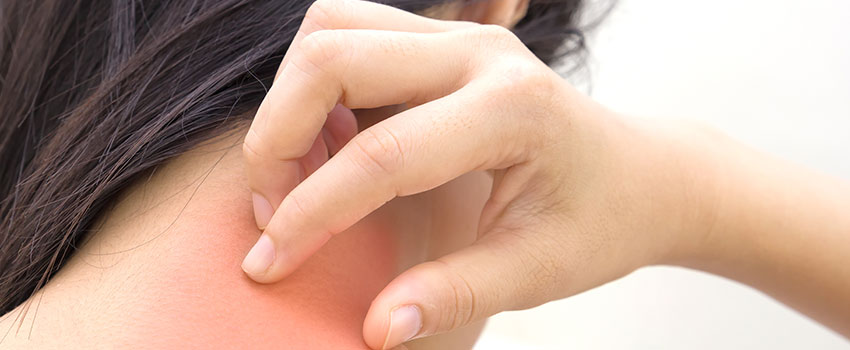How to Prevent Heat Rash

Rashes are more common during the summer months, and heat rash is one of the most common forms of skin rashes that people experience this time of year. Although it’s not usually severe or dangerous to experience, heat rash is uncomfortable and itchy.
As it keeps warming up in our area, it’s best to be informed about what heat rash is and what you can do to prevent it from happening to you.
Our AFC Urgent Care Indian Trail team provides some helpful information below.
What heat rash is: Heat rash (also known as prickly heat and miliaria) develops when blocked pores trap perspiration under your skin. Symptoms range from superficial blisters to deep, red lumps, and some forms of heat rash cause a prickly sensation.
Why heat rash is caused: Heat rash develops when some of your sweat ducts clog. Instead of evaporating, perspiration gets trapped beneath the skin, causing inflammation and rash.
Here’s what to do about it: The first thing you need to do is cool off. Since heat rash is caused by clogged sweat glands, getting your body cool again by seeking out air conditioning is one of the best ways you can treat the rash.
What to do next: Apply cold to the rash. Whether you choose a cold compress, cool showers or damp cloth, cold water can bring immediate relief and can help stop swelling, ease itching and slow the progression of a rash.
What to do after: If your skin has been cool for several hours and the rash still hasn’t faded, your rash may require skin ointments such as calamine lotion, anhydrous lanolin and topical steroids to relieve discomfort and prevent complications.
Action steps to take: Hopefully, one or more of these treatment options has caused your heat rash to fade away. To avoid future occurrences of heat rash, avoid strenuous outdoor exercise when it’s hot outside, stay cool indoors, dry your skin thoroughly after sweating and wear lightweight, loose-fitting clothes.
When to visit the doctor for heat rash: See your doctor if you have symptoms that last longer than a few days, the rash seems to be getting worse, or you notice signs of infection, such as increased pain, swelling, redness or warmth around the affected area.
Doctor recommendations: In addition to the previous prevention tactics that we’ve mentioned, one of the best things you can do to stay healthy and prevent future heat rash is by staying hydrated. Remember to drink lots of water—especially during the summer months!
If you’ve developed heat rash and you are concerned about your symptoms, don’t hesitate to visit our AFC Urgent Care Indian Trail team—we can take care of you!
